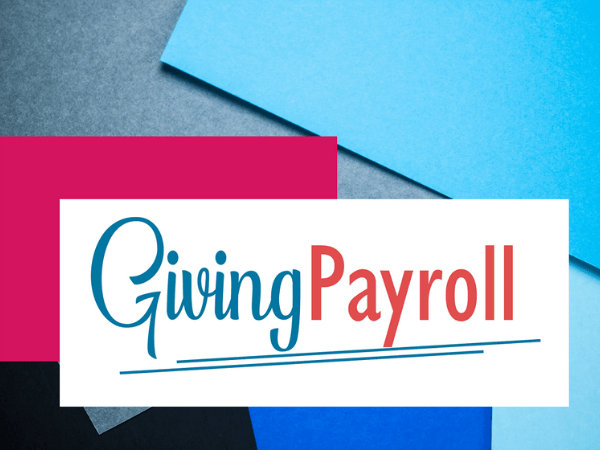
Hello, brave financial sleuths and nonprofit defenders!
Grab your detective hats (yes, those stylish fedoras) and join me on a thrilling escapade into the shadowy alleys of payroll fraud.
It's like a classic whodunit but with more spreadsheets and fewer smoking guns.
The Lineup of Usual (and Unusual) Suspects
Before we delve into our toolkit, let's have a look at the lineup of culprits we're facing off against. And here's the kicker: the mischief-makers are often from within our own ranks!
- Email Scams (The Crafty Impersonator): A digital masquerade where scammers pose as employees or vendors to reroute funds. Think of it as identity theft with an e-twist.
- User ID Theft/Hacking (The Cyber Intruder): Here the bad guys wear digital masks, hacking into systems to divert funds or wreak havoc.
- Ghost Employees (The Phantom Menace): Employees that exist only on paper yet somehow cash real checks. Spooky, right?
- Time Theft (The Time Bandit): Employees who clock in for hours they haven’t worked. It's like they've found a way to clone themselves . . . poorly.
- Fictitious Expenses (The Illusionist): Crafting fake expenses or vendors to make money disappear like a magician's rabbit.
- Payroll Manipulation (The Puppeteer): Someone pulling the strings from behind the scenes, adjusting the payroll to their own tune.
Real World Examples: From the Payroll Case Files Here at Giving Payroll
In this section, we delve into the intriguing and often convoluted world of payroll fraud, unearthing real-world examples from our very own "Payroll Case Files." These stories are ripped straight from the trenches of our nonprofit clients, offering a vivid glimpse into a few types of payroll fraud and the ingenious ways you can uncover and tackle them.
The Great Bank Switcheroo: This scam happened to a client that is near and dear to our hearts, and because of it, we were able to catch a few more down the road. The scam? A devious one where the scammer emailed the payroll manager, from the employee’s actual email, requesting to change their bank account info. The payroll manager had a pleasant back-and-forth email with the “employee” and finally sent them the direct deposit change form. The scam led to the employee's payroll being routed to the scammer's account instead. By the time the scam was caught, it was too late; the scammer made off with the money, and the nonprofit was out $2,850.
The Ghost Employee File: In this gripping case, our payroll detective (accountant) faced a puzzling scenario: money flowing regularly to an employee who, as it turned out, didn’t exist outside of payroll records. It began with a routine audit done by the newly hired accountant to get a grip on the books, where mismatched numbers between databases and payroll voids raised the first red flags. Digging deeper, our protagonist found a trail of evidence leading to a crafty insider, the payroll manager, the very person entrusted with the protection of the payroll! This employee had concocted a phantom colleague, funneling paychecks to a fabricated account for over six months. It was a chase through a maze of records, interviews, and financial trails. In the end, the detective faced off with the culprit, unraveling the plot and bringing the ghostly tale to a close. It ended in an arrest and the partial recovery of the stolen money.
Your Detective Toolkit: Unraveling the Payroll Plot
Now, let’s equip ourselves with the tools to solve these payroll mysteries:
- Divide and Conquer (The Trusty Sidekicks): Spread out the payroll, bookkeeping, and reporting responsibilities. It's like having a team of Watsons in your corner that create human checks and balances.
- Surprise Audits (The Plot Twist): Keep fraudsters on their toes with unexpected audits from your accountant and bookkeepers. They will never see it coming!
- Thorough Background Checks (The Magnifying Glass): No more ghost employees, please. Let's keep our payroll as ghost-free as possible by incorporating background checks with the hiring process and reporting to the manager or executive director to sign off.
- Transparent Recordkeeping (The Open Book): Keep those records clean and clear, like a detective's neatly organized case file. There should be regular reporting to managers, executive directors, and board members. *Bonus tip: To ensure that there are no conflicts of interest with the checks and balances, the executive director should never sit on the board. So if you are that executive director, start planning for your board replacement.
- Education and Awareness (The Informant Network): Arm your team with knowledge of existing scams, just as you are now. The more they know, the less the fraudsters can get away with.
- Tech Tools (The Gadget Guy): Use technology to track and spot any payroll anomalies. The first stop should be your QuickBooks file (or whatever accounting system you use) and implementing policies and procedures to ensure that fraud is stopped in its tracks.
- Whistleblower Hotline (The Secret Tip-Off): Set up a confidential way for employees to report suspicions. It's like having an anonymous informant in every corner helping your organization protect itself from fraud, internally and externally.
Conclusion: Embrace Your Inner Payroll Detective
So there you have it, intrepid protectors of nonprofit funds. Armed with your detective toolkit and a keen sense of awareness, you're all set to take on the world of payroll fraud. Remember, in the quest to safeguard your organization's finances, every detail counts and every clue is a potential lead.
To learn more about nonprofit payroll fraud and how you can protect your organization, join us for an upcoming free webinar:
Uncover and Avoid Payroll Scams, Theft, and Fraud—How to Become a Payroll Detective.